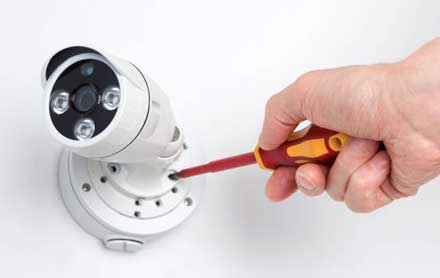The first step in planning a CCTV camera installation is to determine your needs and requirements. Obviously, you will want to keep a close eye on surveillance laws, but there are also several other factors that you will want to consider. These include frame rate, shutter speed, and the placement of cameras. In addition, you will want to consider how you'll store the footage and how much storage space you will need for your cameras.
Keeping an eye on surveillance laws

When planning a CCTV camera installation, it is important to keep the law in mind. Although these cameras are private property, they still need to follow some laws. One of the most important is privacy. If someone can see your face, you need to be aware of what the law says about that.
The use of video surveillance is becoming increasingly popular. Not only can it prevent crime, but it can also improve employee productivity. In fact, seventy percent of small businesses now use video surveillance to monitor their premises. These cameras are becoming smaller, more convenient, and more affordable. Considering the many benefits of video surveillance, it is important to follow surveillance laws.
Camera placement
Choosing the correct camera placement is important when planning a CCTV camera installation. Cameras mounted near natural points of entry are most effective in reducing the risk of trespassers. However, be careful when deciding the camera placement because they may not capture the entire person if their faces are obscured.
First, you should evaluate the property to decide where you will place the cameras. The location of the cameras should be able to capture both the inside and outside areas of the building. The most important areas of the property to monitor are the front door, stairwells, foyer, and back door. It is also important to monitor areas such as garages, loading docks, and basement entrances.
Frame rate
One of the key considerations when planning a security camera installation is the frame rate of the cameras. The higher the frame rate, the less bandwidth will be required to transmit the video. However, reducing the frame rate may be difficult to achieve, especially with mid-sized IP camera systems.
The optimal frame rate will depend on the ambient lighting. Certain camera vendors configure their cameras to reduce the shutter speed when ambient illumination drops. This results in blurred images, and can be unacceptable for security applications. To avoid this, users should always make sure that ambient illumination is constant in the surveillance area. Luckily, some camera vendors have devised solutions to circumvent the frame rate/bandwidth/storage space dilemma.
Shutter speed
Shutter speed is one of the most important considerations when planning a CCTV camera installation. This factor affects a CCTV camera's ability to record in low light. It also plays a role in determining the sharpness of a captured photo. A shutter speed of 1/500 seconds or greater is the most common setting used for surveillance applications.
The shutter speed determines how much light can enter a camera during a photo. The higher the shutter speed, the less light can reach the sensor. This prevents overexposure, which leads to blown-out images. However, high shutter speeds can also freeze movement.
Storage capacity
The storage capacity of CCTV cameras is the size of the storage card that records video. It is usually 6 GB, but you can get more than that. Some cameras store the video on the camera itself, while others store it in a DVR or server. If you have 16 cameras, the storage capacity should be at least six GB each. You should also look at the resolution and the duration of recording.
Summary:
If you want to record video for longer periods, you will want to go for CCTV cameras with a higher bitrate. Higher bitrate means higher resolution, which means higher video storage capacity. Besides, bitrate also contributes to video quality, so high bitrate is essential for CCTV storage. Lower bitrate means lower resolution and less video compression.
